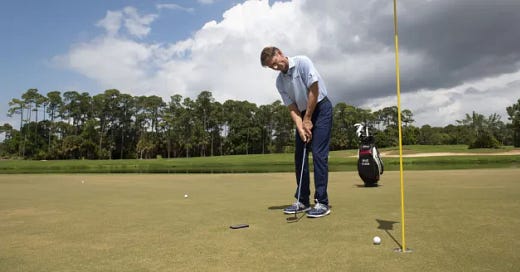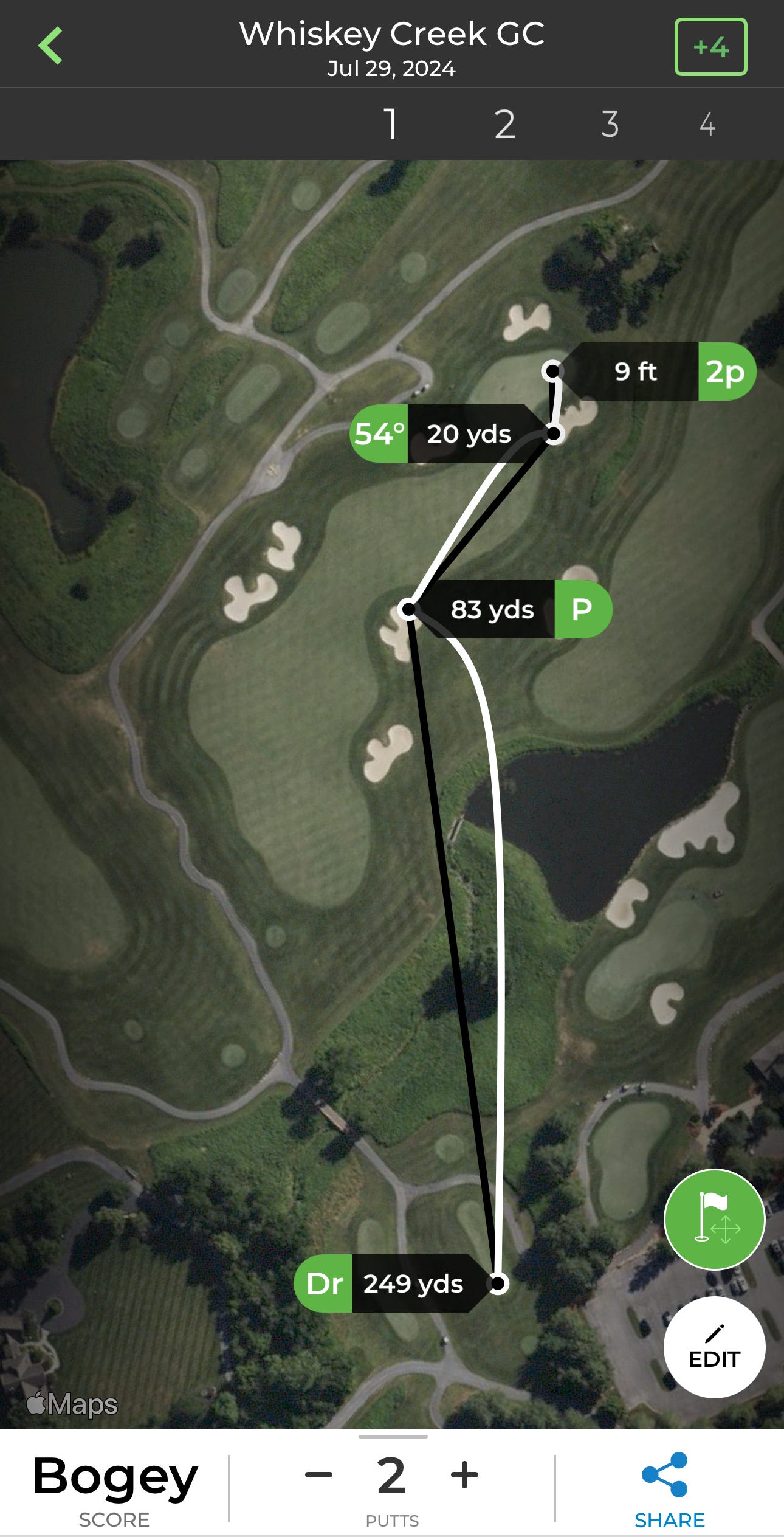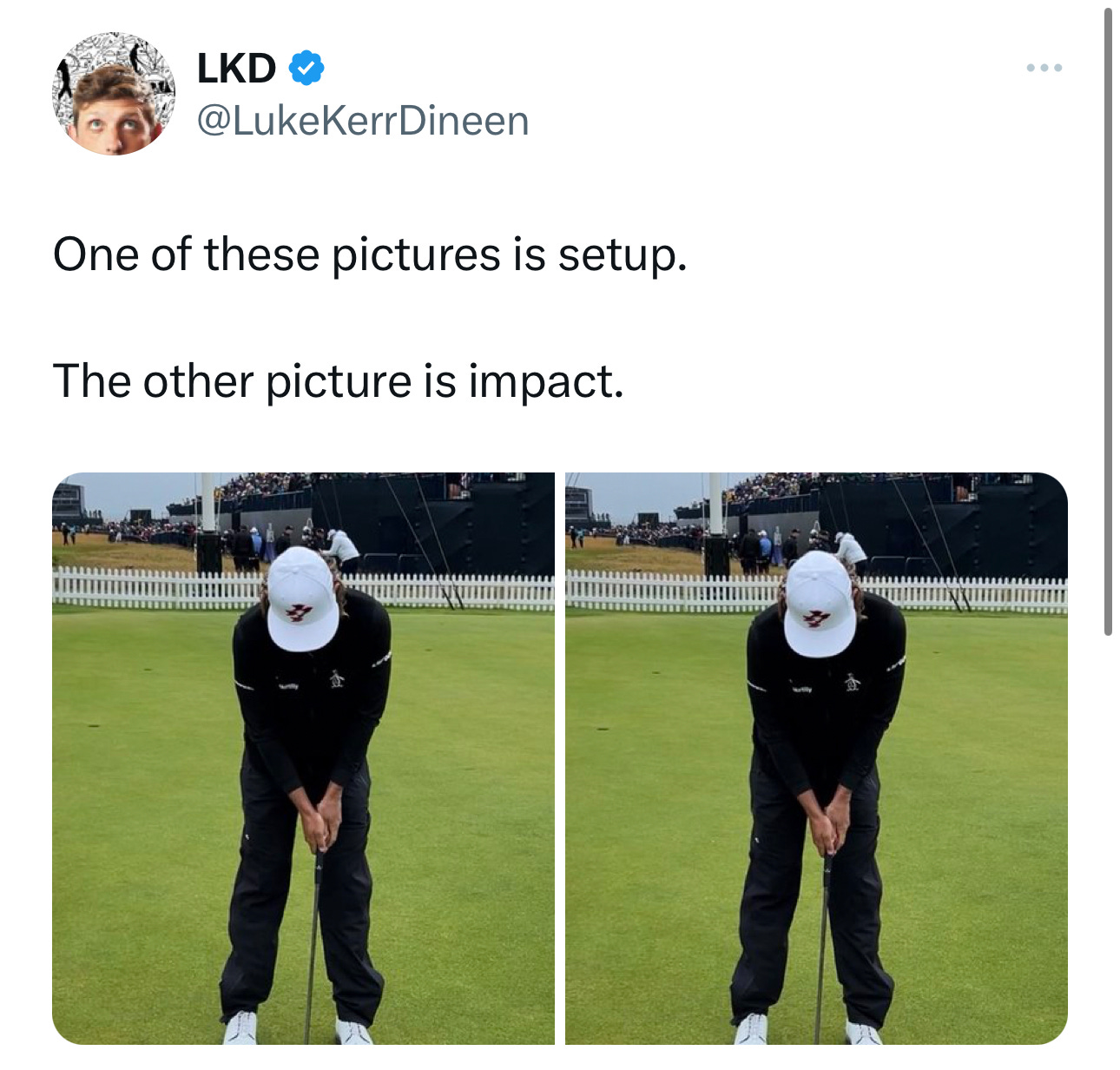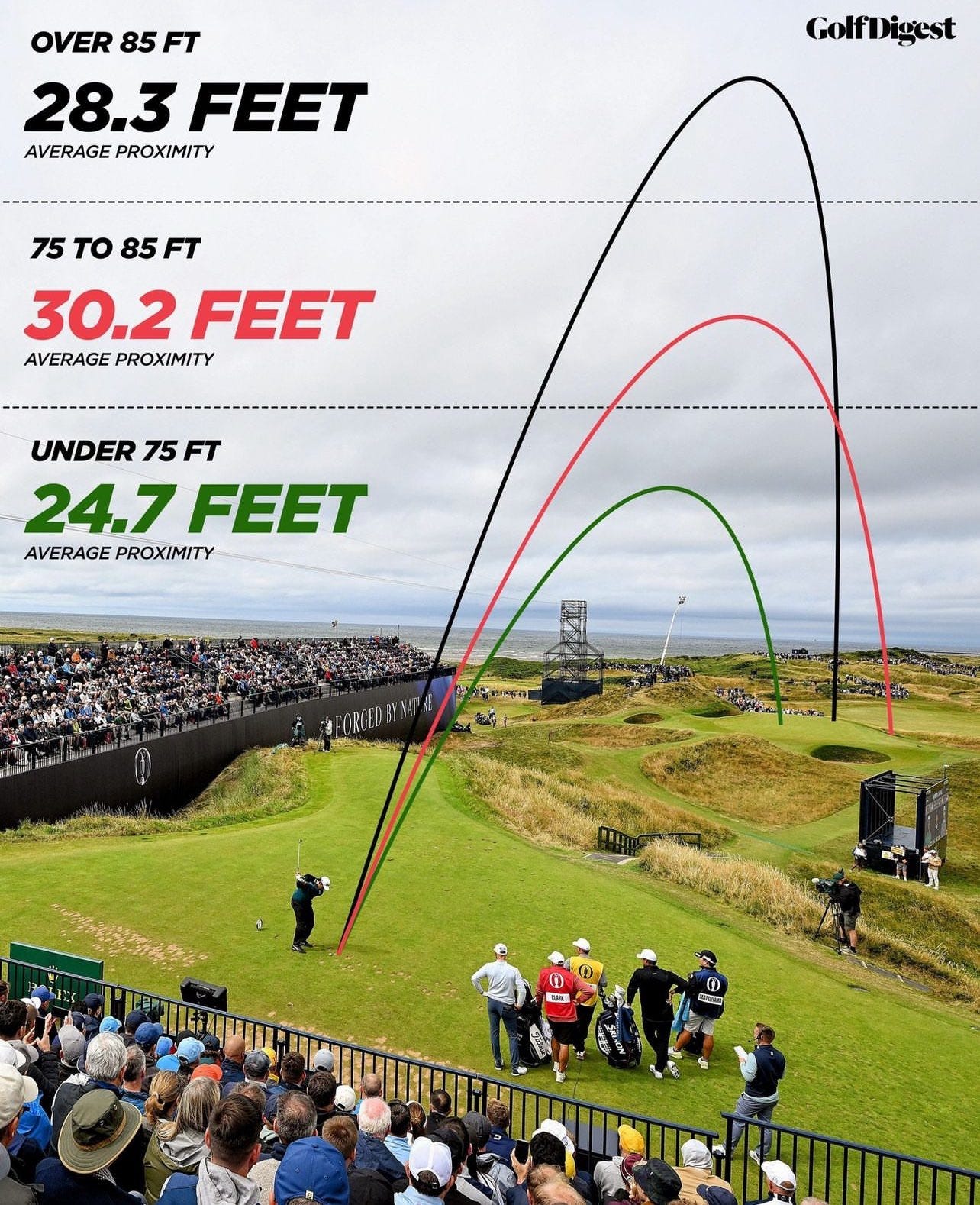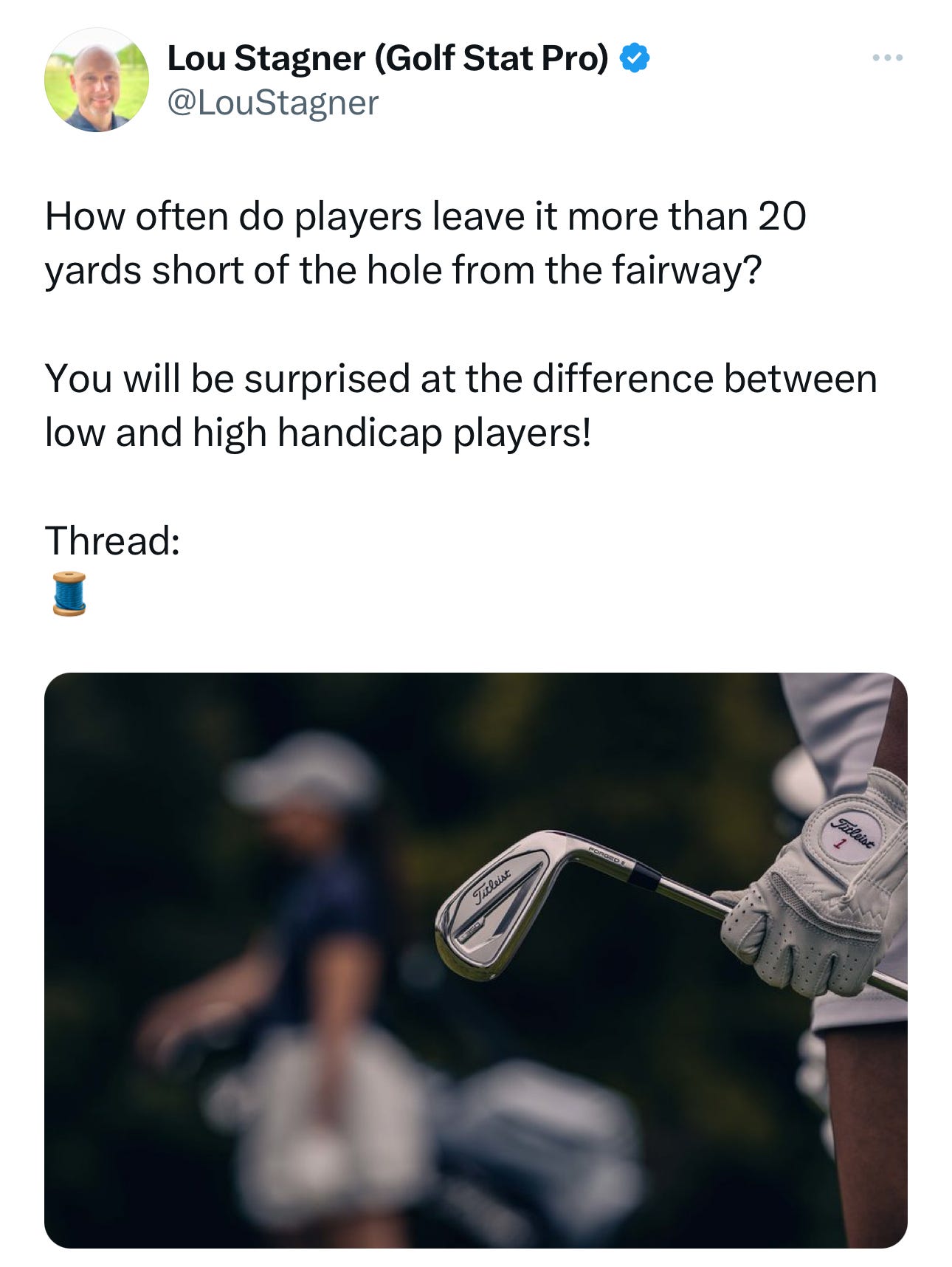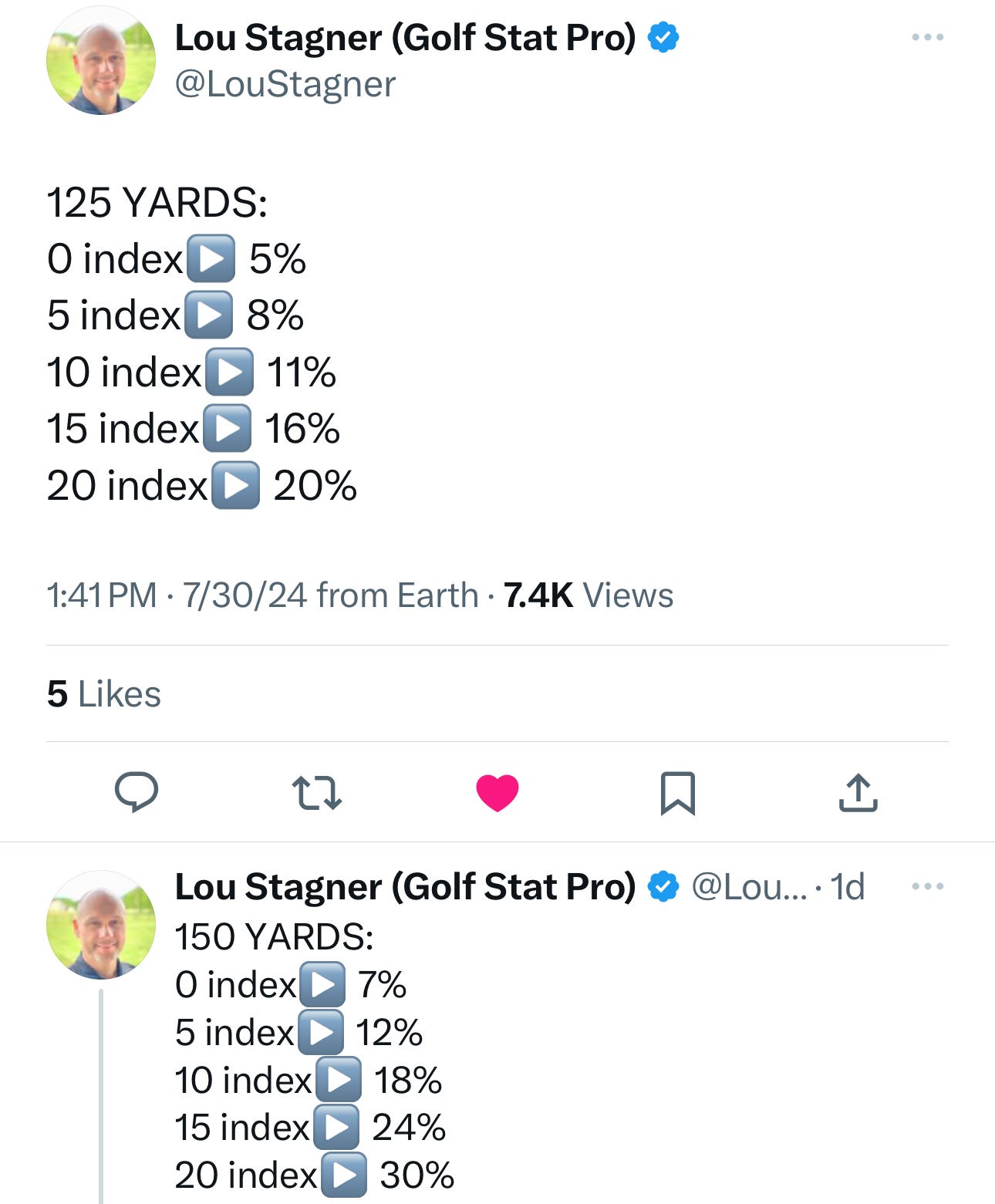The 2nd Cut Newsletter: Edition #56
Arccos Data, A Full Not a Fake Shoulder Turn, Putting with Brad Faxon, 12-Hole Courses, Ball Flight and Proximity and The Stat of the Week
“My attitude was, Don't evaluate a putt and decide whether it's important or unimportant or difficult or easy or makeable or not makeable.” - Brad Faxon
📰 EDITION #56 📰
Welcome back to The 2nd Cut Newsletter!
📫 In today’s Newsletter 📫
Arccos Data, A Full Not a Fake Shoulder Turn, Putting with Brad Faxon, 12-Hole Courses, Ball Flight and Proximity and The Stat of the Week
Arccos Data
I started using Arccos again, so I thought it might be interesting to some people to see what it looks like and what kind of data it provides.
Here’s an example of what it looks like in round:
Arcoss is not for everyone. The end caps on each club can be annoying, and having another thing to pay attention to during a round can be distracting. It’s not the most intuitive app to use.
That said, I personally like Arcoss. The data gives me a feedback loop for identifying areas for improvement.
🐦 Tweets of the Week 🐦
This is an amazing before and after of Cam Smith’s putting stroke. I’m still not entirely sure which is set up and which is impact. Link
I totally agree with Lorne here. A 12-hole course would be perfect for a quick round. Nine just never seems to be enough, and 18 isn’t always doable.
Want to play 18? Replay the first 6.
I’ve never actually played a 12-hole course. Any readers ever play one?
Another great video from Kerrod above. In the video, Kerrod talks about taking a full turn vs. a “fake turn.” He details how the shoulders move independently and provides a good drill for feeling the correct turn. Link
📺 💻 T2C Media 📺 💻
Putting guru Brad Faxon gives Iona a lesson. It’s a little over an hour long but chock full of great tips and drills.
What I like about Faxon’s style is that it’s very feel-based. He doesn’t overcomplicate things and keeps it simple, but he also uses numbers to set students up for success. Check it out.
Here’s an excellent graphic from Ryan Mouque showing various ball-flight trajectories and their average proximity to the hole. As you can see, the low flight is the closest in proximity to the hole.
This is one area that I’ve improved on over the years. In the past, I tended to hit full-on wedges with an extremely high trajectory.
Over time, I dialed my yardages back and started to hit lower-flighted partial shots into the green. Not only did this help me with strike quality, but it made my yardages much more consistent. Link
🔢 Stat(s) of the Week 🔢
We’ve talked about amateurs leaving the ball short way more often than they hit it too long. Lou reaffirms that fact with some great stats in the above tweets.
As you can see, higher handicappers leave it short more often, and those numbers grow the further you are from the green.
From 125 yards, a 15 index is 20 yards short 16% of the time.
Of course, part of this is due to strike quality, with better players mishitting it less often.
But it’s also partly due to club and target selection, which are within our control.
I’ve said it a million times, but we should be ignoring the pin and aiming at the middle-back yardage of the green (most of the time). Pin seeking is adding strokes to your game.
Check out the full thread here.
Thank You
Thank you for reading and subscribing. If you enjoyed this piece, hit the “like” ❤️ button below and share it with a fellow golfer.
Til next time.


